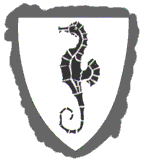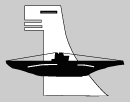| 5th U-boat Flotilla | |
|---|---|
 | |
| Active | 1938–1940 1941–1945 |
| Country | |
| Branch | |
| Type | U-boat flotilla |
| Garrison/HQ | Kiel |
| Nickname(s) | Emsmann Flotilla |
| Commanders | |
| Notable commanders | Korvettenkapitän Hans-Rudolf Rösing |
The 5th U-boat Flotilla (German 5. Unterseebootsflottille), also known as Emsmann Flotilla, was a U-boat flotilla of Nazi Germany's Kriegsmarine during World War II.

U-boat is an anglicised version of the German word U-Boot[ˈuːboːt](

A flotilla, or naval flotilla, is a formation of small warships that may be part of a larger fleet. A flotilla is usually composed of a homogeneous group of the same class of warship, such as frigates, destroyers, torpedo boats, submarines, gunboats, or minesweepers. Groups of larger warships are usually called squadrons, but similar units of non-capital ships may be called squadrons in some instances, and flotillas in others. Formations including more than one capital ships, e.g. men-of-war, battleships, and aircraft carriers, typically alongside smaller ships and support craft, are typically called fleets, each portion led by a capital ship being a squadron or task force.

Nazi Germany is the common English name for Germany between 1933 and 1945, when Adolf Hitler and his Nazi Party (NSDAP) controlled the country through a dictatorship. Under Hitler's rule, Germany was transformed into a totalitarian state where nearly all aspects of life were controlled by the government. The official name of the state was Deutsches Reich until 1943 and Großdeutsches Reich from 1943 to 1945. Nazi Germany is also known as the Third Reich, meaning "Third Realm" or "Third Empire", the first two being the Holy Roman Empire (800–1806) and the German Empire (1871–1918). The Nazi regime ended after the Allies defeated Germany in May 1945, ending World War II in Europe.
The flotilla was formed in December 1938 in Kiel under the command of Korvettenkapitän Hans-Rudolf Rösing. It was named in honour of Oberleutnant zur See Hans Joachim Emsmann, a U-boat commander during World War I, who died on 28 October 1918 after his U-boat UB-116 was sunk by a mine. The flotilla was disbanded in January 1940 and the boats were all transferred to 1st Flotilla.

Kiel is the capital and most populous city in the northern German state of Schleswig-Holstein, with a population of 249,023 (2016).
Korvettenkapitän, short: KKpt / in lists: KK, is the lowest senior officer rank in the German Navy / armed forces of Germany (Bundeswehr).

Hans-Rudolf Rösing was a German U-boat commander in World War II and later served in the Bundesmarine of the Federal Republic of Germany. He was a recipient of the Knight's Cross of the Iron Cross, awarded by Nazi Germany to recognise extreme battlefield bravery or successful military leadership.
The flotilla was re-formed as "5th U-boat Flotilla" in June 1941 under the command of Kapitänleutnant Karl-Heinz Moehle as a training flotilla with her base in Kiel. In 1946 Moehle was sentenced to five years in prison, after being found guilty of passing the Laconia Order to new U-boat commanders before they went out on patrol. He was released in November 1949.
Kapitänleutnant, short: KptLt/in lists: KL, is an officer grade of the captains' military hierarchy group of the German Bundeswehr. The rank is rated OF-2 in NATO, and equivalent to Hauptmann in the Heer and Luftwaffe. It is grade A11 or A12 in the pay rules of the Federal Ministry of Defence.

Karl-Heinz Moehle was a German U-boat commander of the Second World War. From September 1939 until retiring from front line service in June 1941, he sank 21 ships for a total of 93,197 gross register tons (GRT). For this he received the Knight's Cross of the Iron Cross, among other commendations.
The Laconia Order was issued by Großadmiral Karl Dönitz during World War II as a result of the Laconia incident, forbidding the rescue of Allied survivors.










